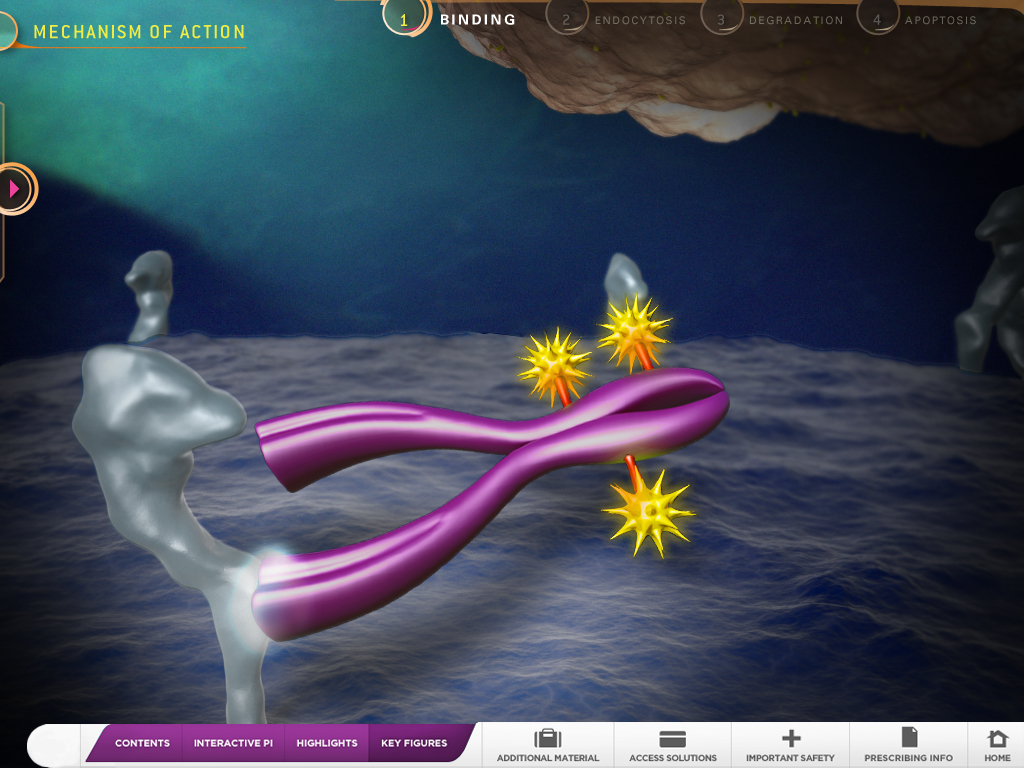Since the launch of the Apple iPad on April 3, 2010, more than 100 million units have been sold, and Apple expects that number to double in 2013. Not unlike the iPhone, physicians are among the biggest adopters of the iPad, which has helped lead to the device becoming a key part of a pharma sales rep’s toolkit.
A 2012 Manhattan Research report confirmed that 65% of “ePharma” docs who met face-to-face with pharma salespeople used an iPad, representing an increase from 30% in 2011. Additionally, a recent report conducted by MD Mindset titled iPad Use and Effectiveness: 2012 Syndicated Data Report, showed that doctors prefer the iPad predominantly as the visual aid of choice in sales presentations.
Given the growing use of the iPad and other tablets by pharma reps and the need for doctors to have better tools to assimilate important information, we thought we would share some helpful tips for maximizing the effectiveness of these devices for product promotion and education. Where appropriate, we have included some specific examples to help illustrate some of our recommendations.
1. Recognize the iPad as a platform for delivering rich, immersive user experiences.
We’ve moved beyond the days where the iPad was used just as a delivery vehicle for flat brochureware. While this may seem obvious, there are still many examples of this that we see out in use in the market. The objective should be to determine how to bring together and integrate many different types of dynamic content and functionality for the device to communicate key product and educational messages in new and innovative ways. 3D animation, video, motion graphics and robust interactivity can be brought together to create immersive experiences that grab viewer attention (even when your interactive sales aid is being delivered on an eDetailing platform).
One example of this is a disease education sales aid app that was developed for a top-five pharma company. One of the goals was to develop a tool that the client’s field sales force could use to educate oncology HCPs about the histological characteristics of an aggressive type of breast cancer and the HER2 biomarker. The app (see below) included a high-science 3D representation of a breast cancer tumor that the user was able to manipulate in various ways, and simulate testing of tissue samples using cross-sections and biopsies.
2. Leverage the unique capabilities of the device.
Many of the leading tablet devices integrate unique features that can be leveraged in creative ways to enhance message delivery. An example of this is the iPad’s built-in gyroscope. When combined with the device’s accelerometer, motion sensing accuracy is improved which enables the iPad to measure which direction it is moving/rotating in space, how much and how fast.
For example, you can integrate real-time, 3D software into an interactive sales aid that leverages the iPad’s built-in gyroscope. This innovation allows the user to control their viewing perspective within a fully immersive 3D cellular environment—all just by holding and moving the iPad in space! The user could even interact with different 3D elements on and above the cell surface thereby triggering various 3D animation segments.
3. Build programs that are meant to be shared.
As the average pharma sales call has been estimated to be two to three minutes, it is important to be able to quickly capture the attention of HCPs and engage them in a meaningful way. By effectively combining education with entertainment on the tablet, HCPs are much more likely to want to try out a certain tool for themselves. This can lead to longer and more active engagements. When used appropriately, unique interactivity and gaming elements can be very helpful in this area both for longer and shorter interactions.
4. Develop a plan for capturing and reporting data.
With product managers focusing on ROI more than ever, it is important to have a clear strategy in place for data capture and reporting. Many existing sales detailing and CRM platforms provide this type of analytics capability. However, it is important to understand exactly what information is most critical to capture. This includes quantitative data, as well as qualitative feedback from the field. Data is critical to being able to test effectively and then pivot based on market feedback. See the figure below:
5. Define and execute an effective plan for user orientation and training.
Putting iPads into the hands of sales reps without the right training is like someone owning a Lamborghini without knowing how to drive one. It is critical to ensure that there is an effective plan in place for sales rep orientation and training for any new interactive sales aid app. Users must become comfortable using the device both for longer engagements such as in a lunch-and-learn setting or for very brief hallway encounters with HCPs. The goal is to maximize every single interaction with a customer regardless of duration.
6. Develop a clear plan for app deployment, updating and refinement.
Whether your company has a closed-loop strategy in place or not, you will need to have a clear plan in place for app deployment, updating and refinement. Key questions that need to be answered include:
- How will we distribute this app to the field?
- How will content be updated when new product data is available?
- How will a product label change be handled?
- How will new POA marketing messages be integrated?
This will likely require close coordination and active collaboration with your internal IT group. It is important to recognize that this type of initiative is an ongoing process that will shift and evolve over time.
We hope these tips will help you get the most out of your selling efforts on the iPad and other tablet devices. We look forward to seeing how future technology advancements will provide new opportunities for further enhancing interactions with customers.








